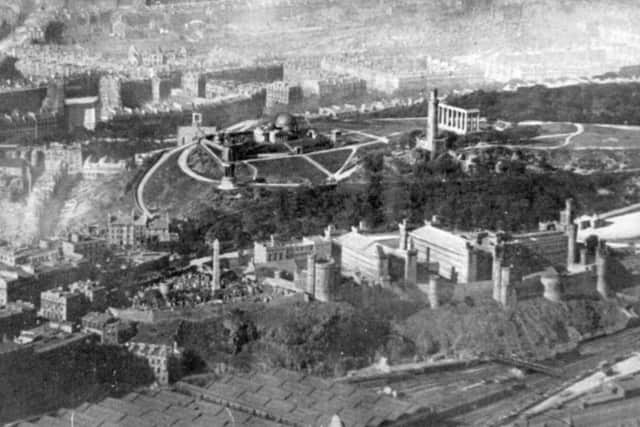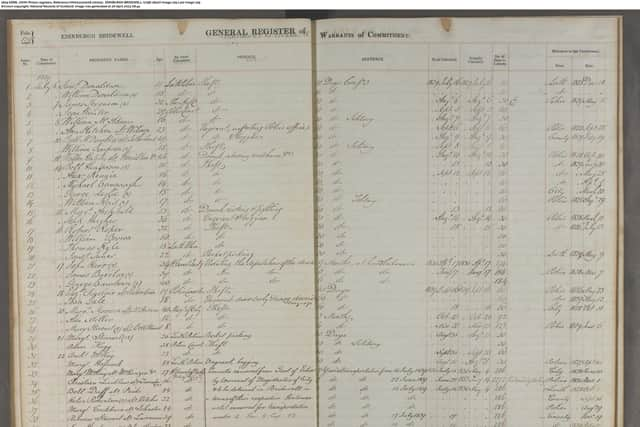Bodysnatchers, a cheese thief, a bigamist and a woman who 'showed a porcupine' listed in 19th Century prison records
Three men convicted of snatching corpses from a graveyard, a bigamist, a son who was jailed for annoying his mother and a man caught with a 12lb round of gouda are among thousands of Scots who appear in newly released prisoner records.
Other offences listed in the 19th Century documents include “begging and showing a porcupine” and stealing a turnip.
Advertisement
Hide AdAdvertisement
Hide AdDetails of the crimes and punishments have emerged in new searchable indexes for registers at Bridewell and Calton prisons in Edinburgh and Largs Jail in North Ayrshire, which have now been added to ScotlandsPeople, Scotland’s official genealogy website. Together, the records span more than 50 years from 1798 to 1853. More than 40,000 entries record prisoners at Bridewell alone.


Among the records from Bridewell is a group found guilty of “violating the sepulchres of the dead” after they were accused of digging up the corpses of two adults and a child of 21 months from Lasswade Kirkyard, south of Edinburgh, in February 1829.
John Kerr, of Edinburgh, was one of the three men found guilty, was made an example of and sentenced to ninth months’ hard labour.
The other two so-called “resurrection men” – James Barclay and George Cameron – each served six months’ hard labour but others involved in the crime were not prosecuted.
Archivist Stefanie Dempster, from National Records of Scotland, which runs the ScotlandsPeople, website said: “These remarkable records are a fantastic resource for social researchers and those researching their own family tree.


“Alongside many petty thefts and incidents of drunken behaviour, we see crimes that were of their time, like snatching corpses from graveyards to sell to surgeons teaching anatomy.
“The harsh lives lived by many are clear from cases like that of a woman who had requested the magistrate send her to prison with the records stating the reason – being lame.
“These records offer a glimpse at the grittier side of life in early 19th century Scotland.”
Advertisement
Hide AdAdvertisement
Hide AdBridewell Prison on Calton Hill, built by Scottish architect Robert Adam, was the capital’s jail for petty offenders and stood on the site for almost 30 years before Calton Jail – once the largest in Scotland – opened its doors.
As city leaders sought to project a new image of the capital, it filled with beggars and thieves trying to make a living on the streets. Meanwhile, imprisonment was increasingly used as an alternative to capital and corporal punishment.
In 1882, Grifina Viniere, 28, was jailed here for eight days after being convicted of begging and showing a porcupine. Meanwhile, 15-year-old Christopher Baxter received a sentence of 60 days for stealing two apples.
Calton Prison, which stood where St Andrews House can now be found, was considered as the worst prison in Scotland. Described as “cold, silent and repellent”, its discipline was considered extremely harsh and the diet atrocious.
Here, in 1851, Adam Bishop, 23, spent a day after being jailed for annoying his mother. Turnip thief William Inglis was locked up for a period unknown in 1846 and Thomas Gegg, 15, was sent to Calton for stealing a piece of gouda weighing 12lb.
Down in Largs, Joseph Fleming, aged 43, was jailed for nine months after being found guilty of bigamy.